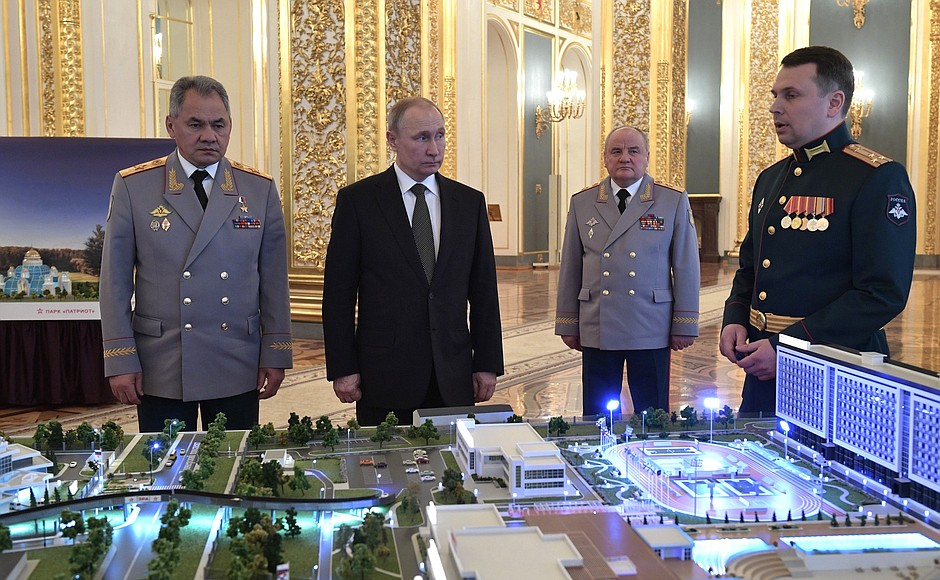As has been the case for quite a handful of decades now, in 2018 Russia remains amongst the hottest, most central nations in news coverage. From the strange geo-political bridge formed between Trump’s administration in the West and Putin’s in the east, to the massive spotlight of the World Cup, its relevance and fortitude seems to have done little else if not increase. Under the light of such political and organizational developments, assessing Russia’s efforts towards the UN’s sustainable development goals achieves a novel degree of importance.
Today, orchestrated by a plethora of Russian diplomats within the UN General Headquarters, a presentation titled “Regions of Russia and the UN Sustainable Development Goals” looks to shed light on the issue. The event opens with remarks from Vassily Nebenzia, permanent representative of the Russian Federation to the UN, who takes time to discuss this year’s importance for the propagation of Russia’s image in the world. “Before the World Cup,” he says, “many were perhaps afraid to visit Russia, but because of its great success, we now have many fans that want to come back”. The 2018 FIFA World Cup, as it spread its events across the nation, stands as a glistening symbol of Russia’s latest efforts to “connect the urban to the rural and viceversa”, a cornerstone of Russia’s internal geo-political dynamisms.

To illustrate the sustainability of these developments, the presentation uses the particular region of Sverdlovsk as paramount example. Sverdlovsk Oblast, stands amongst both the most central and diverse of Russian’s many regions, blurring the boundary between Europe and Asia both territorially and ethnically. Its governor, Mr. Evgeny Kuyashev, one of the conference’s keynote speakers, paints a brilliant portrait of the peculiar area and its most recent developments. Home to more than 160 different ethnic groups, the area had long been amongst Russia’s least developed. The last five years, however, have seen the region, and its most prominent city of Ekaterinburg with it, engage in remarkably constructive developments that have changed its face entirely. Coasting the Ural Mountains, the area already boasted some of the world’s greatest deposits of pure metal, which have driven the development of the area forward, birthing over 13,000 industrial companies. Over the last five years, the area which had previously been mostly rural-industrial, has seen to the establishment of multiple universities, amounting now to a total of 25, new railroad lines, and new roads.
Ekaterinburg, the area’s greatest urban environment, has seen its life expectancy increase, as well as a number of innovative housing and academic projects rapidly take to the streets. Its connectivity enhanced and its infrastructure modernized, it has quickly transformed itself into one of Russia’s primary transit hubs, and most modern technological centers for research and development. As such, the city (and the area with it), has moved forward enough to become one of the primary candidates to host the 2025 World Expo. Its administration, captained by Mr. Kuyashev himself, has moved, along the lines of the UN’s sustainable development goals, devoted one fourth of its regional budget on educational efforts, while the rest has gone towards “making sure these education efforts find a match in infrastructure, technology, research and development”. The area, then, breathes air of modernity into the rural lungs of central Russia, seemingly upholding the UN’s sustainable development efforts to an impressively high standard.
The second keynote speaker to highlight the apparent success of Russia’s sustainable development goals, Russian minister and Moscow government official Mr. Sergey Cheremin follows along the same lines in illustrating the capital’s recent efforts towards sustainability. “Up until a few years ago, Moscow’s transport system was in shambles, to the point of collapse,” warns the official. However, the developmental efforts engaged with in recent years, have transformed Moscow into one of the Financial TIme’s top five attractive cities for investors. In other words, Moscow has been sustainably growing and innovating. Its transport system has been completely reshaped, adding more than 90 public parks, repaving over 200 streets, modernizing public and private transport, adding bike lanes and pedestrian esplanades all over the capital. Bike sharing, car sharing, and scooter sharing services are being implemented with incredible success. Through it all, however, Moscow has maintained a high standard of sustainability, employing an Intelligent Traffic Control System oriented toward ecologically friendly solutions. The immense traffic born of the World Cup was impressively handled, despite the incredibly testing conditions it imposed on the city’s traffic.

On top of these environmental efforts, Moscow has been moving towards modernizing its citizen’s way of life well past the conceptual bounds of the world cup. The development of the technopolis project, a massive technological development, along with the creation of the Moscow International Medical Cluster display the success of Russian efforts to provide sustainable economic and infrastructural development that is expected to seamlessly transition to incredibly positive economic outcomes. Decreases in unemployment, along with the eradication of poverty and hunger, all goals of the UN’s sustainable development agenda, are suddenly within reach.
It is, in all honesty, a peculiar sensation to witness a globally conservative giant like Russia move towards ecological, social and economic sustainability with such apparent dedication. There seems to exist a degree of imbalance, on the other hand, held within this dedication. Given the apparent vicinity between Vladimir Putin and Trump, two relatively outspoken climate change skeptics, Russia’s concrete efforts towards sustainability seem slightly out of place. Nevertheless, they seem to be absolutely legitimate, and even fan stories from the World Cup seem to hold little other than positivity. As such, Russia, at least on paper, seems to be moving in a much more sustainably favorable direction than the United States, both in words and action. A peculiar imbalance for two massive geo-political players with evident mutual interest.











